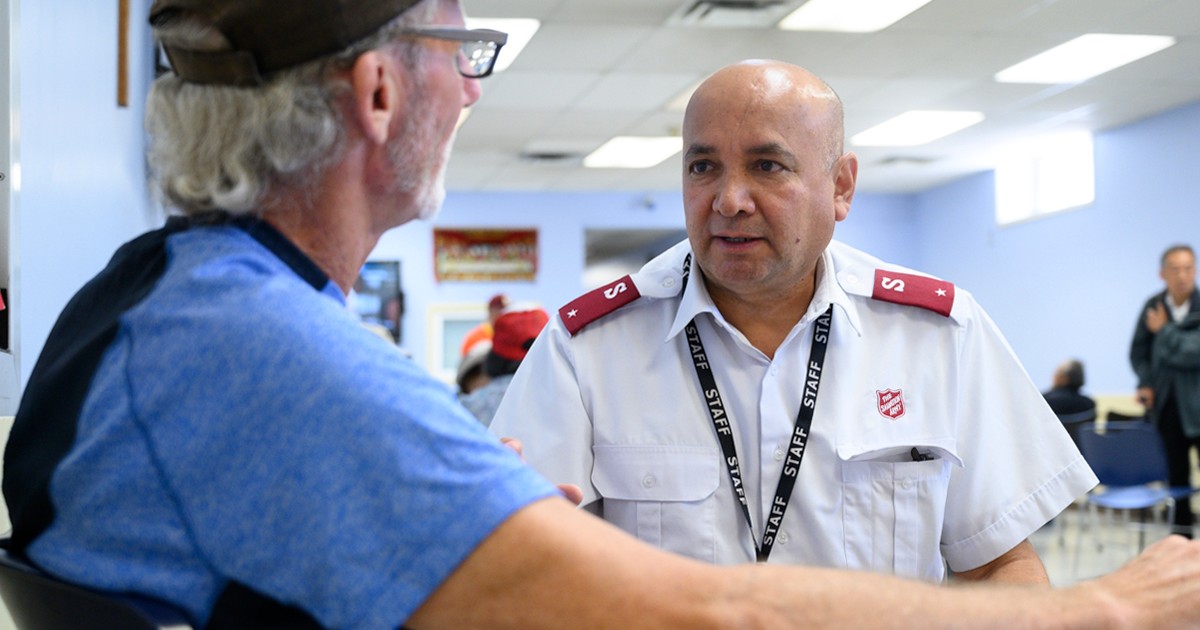It was the summer of 2013. My husband, David, and I had just been commissioned, along with our fellow Proclaimers of the Resurrection, and were appointed to Goderich, Ont., “Canada’s Prettiest Town.” Goderich is a charming rural community nestled on the shores of Lake Huron, about an hour and a half northwest of London. Visitors to Goderich have been heard to exclaim that it’s like being dropped into the middle of a movie, everything is just so perfect.
While it’s certainly pretty, it would be an illusion to think that life here is always picture-perfect. Over the past five years, as we have supervised two community and family services offices, we have seen an increase in requests for assistance from individuals and families who are finding it difficult to make ends meet.
We don’t often think of homelessness as a problem in rural communities, but the truth is it’s an unfortunate reality. In urban centres, individuals experiencing homelessness are easily identified, with options for services. But in rural communities, most of our homeless neighbours are hidden—either couch surfing, sleeping in make-shift shelters or camping out.
Homelessness in Huron County is not new, but last winter, a few of our homeless neighbours became much more visible. As I listened to various concerns and suggestions about how to respond, I realized that, for some, the offered solutions have less to do with meeting a need and more to do with hiding reality. Homelessness shows us that our system is broken, and sometimes it’s easier to pretend it’s not happening than to confront the system. While some have argued that the visibility of our homeless neighbours threatens the beauty of “Canada’s Prettiest Town,” I believe this ugly attitude is more of a threat than someone sleeping outside.
As I have engaged with our homeless neighbours, I have been spiritually convicted to do more to meet the needs of the most vulnerable among us. I’m not content to simply hide the realities, nor am I content to tell someone else how they should be caring for these folks. Instead, I’m asking, “What does the Lord require of me?” and “How can we (as a community) work together to meet this need?”
Almost every major religion has a form of the “Golden Rule.” Taught by Jesus, this rule is, “Do to others as you would have them do to you” (Luke 6:31). Genesis 1:27 tells us that God created humankind in his own image. Whether an individual finds themselves cozy in the biggest mansion or shivering in an abandoned shed, each has been created in the image of the Creator himself. While it is not me on the street, what if it was? How would I want people to talk about and engage with me?
In Matthew 25:34-40, Jesus tells the story of the Son of Man coming in his glory and judging the nations. The King rewards those on his right because they took the time to care for “the least of these brothers and sisters of mine.”
In 2015, Ontario artist Timothy Schmalz donated 52 “Whatsoever You Do” sculptures to The Salvation Army, and Goderich was the recipient of one of them. In the foyer of our church, “Homeless Jesus” sits cross-legged with his hand outstretched underneath the portion of Scripture from Matthew 25. Throughout the winter of 2018, this Jesus has spoken volumes.
Homelessness is not easy to see. In our rural community of Goderich, seeing homelessness has stirred up feelings of discomfort. People are bothered by it. People do not typically enjoy being challenged or feeling uncomfortable. But in this case, I think we should feel uncomfortable. We should be bothered by the reality that people are sleeping outside. I encourage everyone to wrestle with these feelings and be part of confronting a broken system.
It’s easy to tell someone else what they should be doing, but instead of being another pointing finger, let’s have a conversation about what we could be doing together. Homelessness is a complex issue, but caring for our neighbours does not need to be.
Here are a few ideas for where to start:
- Educate yourself on the reality of homelessness in your area. There is a lot of stigma associated with being homeless. If we each took the time to understand the underlying issues, it could go a long way to creating a healthier, more inviting community.
- Commit to being part of the solution. It’s too easy to think someone else will take responsibility for solving the “problem” of homelessness. Instead of pointing a finger, why not ask, “What can I do?”
- Be a voice for those who have no voice. As I have journeyed with some of our homeless friends, I have learned that there is room for advocacy on their behalf—advocacy for a place of belonging and for change.
- Volunteer. In the winter of 2017, the Goderich Ministerial and Huron County worked together to provide emergency accommodation during the coldest months of the year. During the winter of 2018, “Huron Out of the Cold” reopened its doors and assisted 28 people experiencing homelessness between December 2017 and March 2018. Programs like this exist in various communities. If it is not an overnight shelter, perhaps it’s a meal program. A great way to learn more about neighbours is to spend time with them; our homeless neighbours are no different.
- Be self-aware. Be attentive to your own language regarding our homeless neighbours. Be critical of your own thoughts and feelings—check them against facts and prayerfully consider how God would have you speak about and engage with our homeless friends.
Captain Laura Hickman is the corps officer at Suncoast Citadel in Goderich, Ont.
Feature photo: © Stolk/iStock.com










Leave a Comment